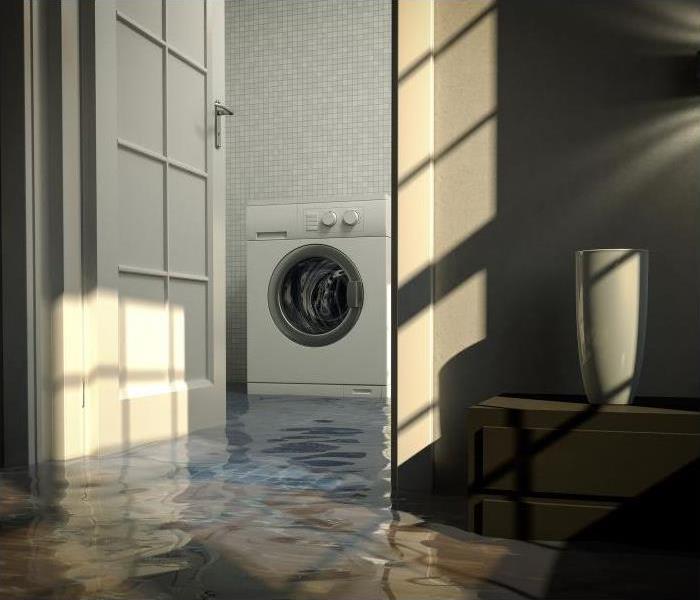Comprehensive Guide to Prevention and Maintenance of Water Damage: Protecting Your Property
8/17/2023 (Permalink)
Water damage is a common, yet serious issue that property owners encounter. It is crucial to understand the nuances of water damage, from its causes and signs to the steps involved in water damage restoration. This comprehensive guide delves into the prevention and maintenance of water damage, offering valuable insights and tips to safeguard your property effectively.
Understanding Water Damage
Water damage refers to the destructive effects of water intruding where it can enable an attack on a material or system through destructive processes such as rotting of wood, mold growth, and rusting of steel, among others. It's categorized into different types based on the water source - clean water damage, grey water damage, and black water damage.
Common Signs of Water Damage
Here are some common signs of water damage in your house that you should not ignore:
Stains or Discoloration on Ceilings or Walls
These can indicate water seepage from the roof, pipes, or condensation.
Dark or Wet Spots on Ceilings, Walls, Floors, or Carpets
These can indicate active leaks or water accumulation.
Cracking, Bubbling, or Flaking of Paint or Wallpaper
These can indicate water damage behind the surface.
Musty or Damp Odors
These can indicate the presence of mold or mildew, which thrive in moist environments.
Warping or Buckling of Floors, Walls, or Ceilings
These can indicate swelling or distortion of the materials due to water exposure.
Mold or Mildew Growth
These can indicate a serious health hazard and should be removed as soon as possible.
If you notice any of these signs of water damage in your house, you should contact a professional water damage restoration company to assess the situation and repair the damage. Water damage can lead to costly repairs and health problems if left untreated.
Key Causes of Water Damage
Water damage could stem from natural disasters like floods or storms, but common household issues like burst pipes, leaky roofs, appliance leaks, and sewage backups also pose significant threats. It's crucial to address plumbing issues, maintain your rain gutters, and ensure your sump pump is in working order to prevent such incidents.
Health Risks Associated with Water Damage
Long-term exposure to water damage can lead to health problems due to the growth of mold and other biohazards. Mold exposure can cause allergic reactions, asthma attacks, and other respiratory problems.
Immediate Actions to Take After Water Damage
After ensuring the safety of all inhabitants, the initial steps involve stopping the water source, if possible, and moving valuables to a dry area. Document the damage for insurance purposes and contact a professional water damage restoration company for immediate water extraction and drying services.
Importance of Water Damage Inspection and Assessment
Professional assessment of water damage involves the use of advanced tools like moisture meters and thermal imaging cameras. This step is vital in identifying the extent of the damage, including hidden moisture that can lead to mold growth.
The Water Damage Restoration Process
Water damage restoration is a multi-step process involving water removal, drying, dehumidification, cleaning and sanitizing, and finally, restoration and repairs. This process requires special equipment, such as air movers for drying and commercial-grade dehumidifiers for moisture control.
Preventing Water Damage: Effective Maintenance Tips
Regular maintenance like checking your plumbing system, ensuring good property drainage, installing a sump pump, and roof inspections can prevent water damage. Additionally, maintaining indoor air quality through dehumidification can prevent excess moisture build-up.
DIY vs Professional Water Damage Restoration: A Comparison
While property owners can sometimes tackle minor water damage, professional water damage restoration is crucial for severe cases. Professionals can effectively sanitize the area, prevent mold growth, and restore the property to its original condition.
Choosing the Right Water Damage Restoration Company
When selecting a water damage restoration company, check for certifications, insurance, references, and quick response times. A company that offers emergency mitigation services would be ideal.
Navigating Insurance Claims for Water Damage
Most homeowners' insurance policies cover sudden and accidental water damage. Document all damage and record all repairs for a smoother claim process.
Technological Advances in Water Damage Restoration
Advancements in technology have made water damage restoration more effective. New tools for leak detection, moisture measurement, and drying have made the process quicker and more efficient.
Case Studies in Water Damage Restoration
Real-world case studies can provide valuable insights into the water damage restoration process and its effectiveness. They demonstrate the challenges encountered and the strategies implemented to overcome them.
Conclusion
Water damage is a threat that property owners should not underestimate. By understanding its causes, signs, and the necessary steps for restoration, you can act swiftly if it occurs and minimize its effects. Remember, the key to dealing with water damage lies in prompt response and effective restoration.






 24/7 Emergency Service
24/7 Emergency Service
